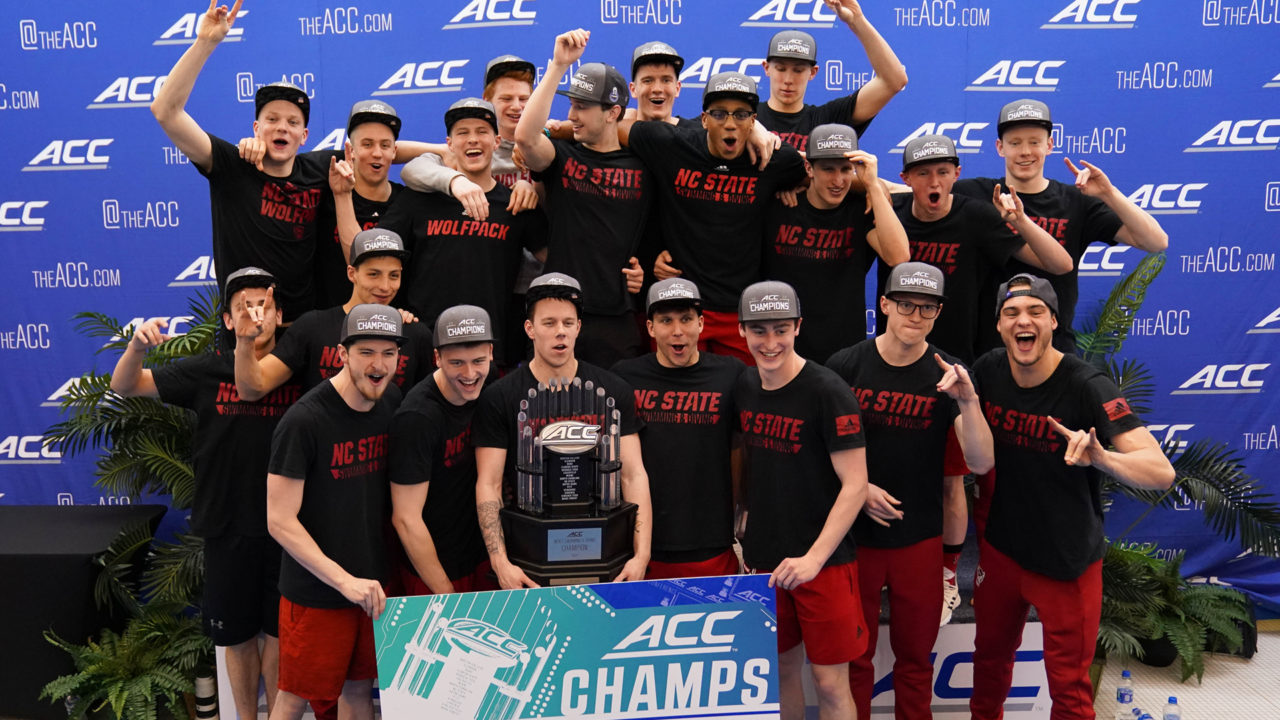ACC Championships
- February 15-19
- SCY
- Georgia Tech, Atlanta, GA
The ACC has shifted to a combined format for its men’s and women’s conference championships, which are scheduled to take place from Tuesday, February 15 through Saturday, February 19.
Prior to this year, the Power 5 Conferences (ACC, Big Ten, SEC, Pac-12, and Big-12) held a majority of the conference championships separated by gender.The ACC has now switched to the combined format, which the SEC and Big-12 have always operated under. Note: The SEC held separate men’s and women’s championships last year due to COVID-19. This shift now means that the majority of Power 5 conference championships will be held as a combined gender format.The Big Ten and Pac-12 are still operating under the separate gender option.
For this year at least, the Big Ten and Pac-12 will separate championships by gender, while stick with the separate format, and the ACC, SEC, and Big-12 will have a combined gender championship meet. the combined format.
See the graphic below for the dates to each meet.
There are many pros and cons to having both men and women competing at the same conference championship meet. See the table below for reasons SwimSwam could think of:
| Pros | Cons |
| Ability to do more than 1 individual event at a session (if necessary) | Longer sessions |
| More time to rest in between events |
Less time to rest in between prelims and finals
|
| Larger Team Presence and energy | Larger Swimmer to Coach ratio |
| Less taxing on coaches traveling | Busier Warm Down/Warm Up Pool |
| Conference taper group can taper together |
Busier Pool Deck/Less Personal Space
|
| Finish the pre-NCAA season together |
Busier pool deck may also conflict with COVID-19 protocols/make them harder to enforce
|
|
All Coaches Present for Meet Duration (most likely)
|
|
|
Cost saving for schools and conference
|
The biggest pro to the meet is most likely having more rest in between events (especially in the case of a relay and individual event double). The biggest con is most likely little rest in between prelims and finals, due to longer sessions. This could be alleviated if prelims begin earlier than in previous years.Last year, prelims began eight hours before the start of finals. Moving the prelims session up an hour though would cause swimmers to have less time in the morning before prelims to sleep, wake up, eat breakfast, and stretch.
There is no clear answer to this debate, and the preference most likely depends on each swimmer and team’s situation. Is someone swimming a double? Do a lot of swimmers make it back for finals and want more time to recover? Does the team enjoy having the comradery of having both genders on deck? These are just a few questions of the many that come to mind.

I think you missed the a huge pro. Combining the squads also theoretically cuts down on travel costs to the program’s budget, especially staff travel (assuming both the men’s and women’s programs share staff members). In this day and age when college sports like swimming are always being threatened with cuts, this is an important aspect.
I imagine it also saves a little bit of money with bus rentals, etc.
It also allows for a team with a combined program to bring ALL of their coaches where usually an assistant or two (who work with both teams) has to stay back and train the group tapering for the next weeks meet.
Could have put the pic as the most recent ACC champions, Louisville.
You missed a pro from the fan perspective in that we get to see double the awesome swimming and swimmers while going to just one meet. Think of the amazing star power across the genders at both the ACC and SEC meets. Lucky us who get to go to one or the other!
Depending on the facility, the conference could also choose to flight preliminary sessions (i.e., hold the women first, and then hold the men), or hold the sessions simultaneously in multiple courses. It probably won’t happen due to the size of the sessions, but it is a possibility. The better question is whether the combination leads to a cost savings for the schools that either a) make the budget look better and make it less likely to be cut, or b) put money back in the budget for swimmer services.